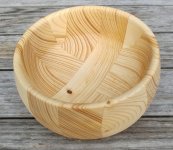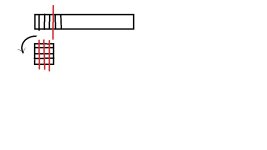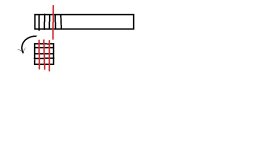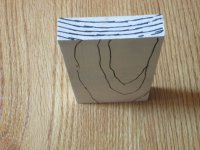Well I guess it is getting to be decision time on the wood species.
Poplar - I have not looked at it, but can generally get reliably nice 12' length poplar a half day trip away. As mentioned the guy currently is recovering from Covid. He seemed confident he would be open again in a week. I'd probably use a little cherry (also readily available from the same source) to accent it.
Cedar - Home depot has lengths up to 12' of cedar (not sure if it is Western Red or not, but it looks like it probably is). I would probably not be able to be too picky as there isn't all that much to pick through, but what there is doesn't look too bad at the one store I looked at. There is another store in town and a 6 more within a 2-1/2 hour drive (one is an hour away). They are spread out in all directions, but it would be possible to hit them all in a LONG day of driving and shopping (10 hours just for the driving). At their prices and figuring 26 BF of lumber it comes out to a bit over $100 of lumber if I figured it correctly.
The pieces are very likely to be a variety of lengths all shorter than 14'. I am not particularly concerned about that.
I am doubtful of how well I would be able to choose boards that will yield vertical grain given the limited selection. I figure that driving to all 8 stores would increase the odds greatly but driving 500 miles and spending a VERY long day or two days driving and shopping at Home Depots doesn't sound like all that much fun. Long trips to sawmills and hardwood dealers is one thing but hitting 8 Home Depots isn't the same.
Bottom line, I see three choices:
- Buy some nice poplar and cherry. It will be heavier and involve 2+ hours of driving.
- Buy the nicest of the cedar at the two local Home Depots and range out to the next closest one(s) if they just don't have anything at all suitable. Lighter wood close to home, but less to pick from.
- Be more picky and range out much further hitting distant Home Depots. Lots of driving with no guarantee of what they will have. Probably a good bet that between them there will be good choices and maybe I can hit a subset of the list and head home without driving the whole loop. Once I hit the second hop outside of Tallahassee it is already a pretty long drive though.
I am leaning toward choice 2. I can start there and if the choices don't look good bail and go with choice 3.
The thing I need to come to terms with is how choosy I should be regarding grain orientation. I understand that vertical grain in the strips is preferred and that will result from flat sawn boards, but I can't imagine that folks are able to find all boards that result in all nice perfectly vertical grain strips. How fussy do we really need to be here with the grain direction of wood that will be sandwiched between two layers of epoxy and glass?





